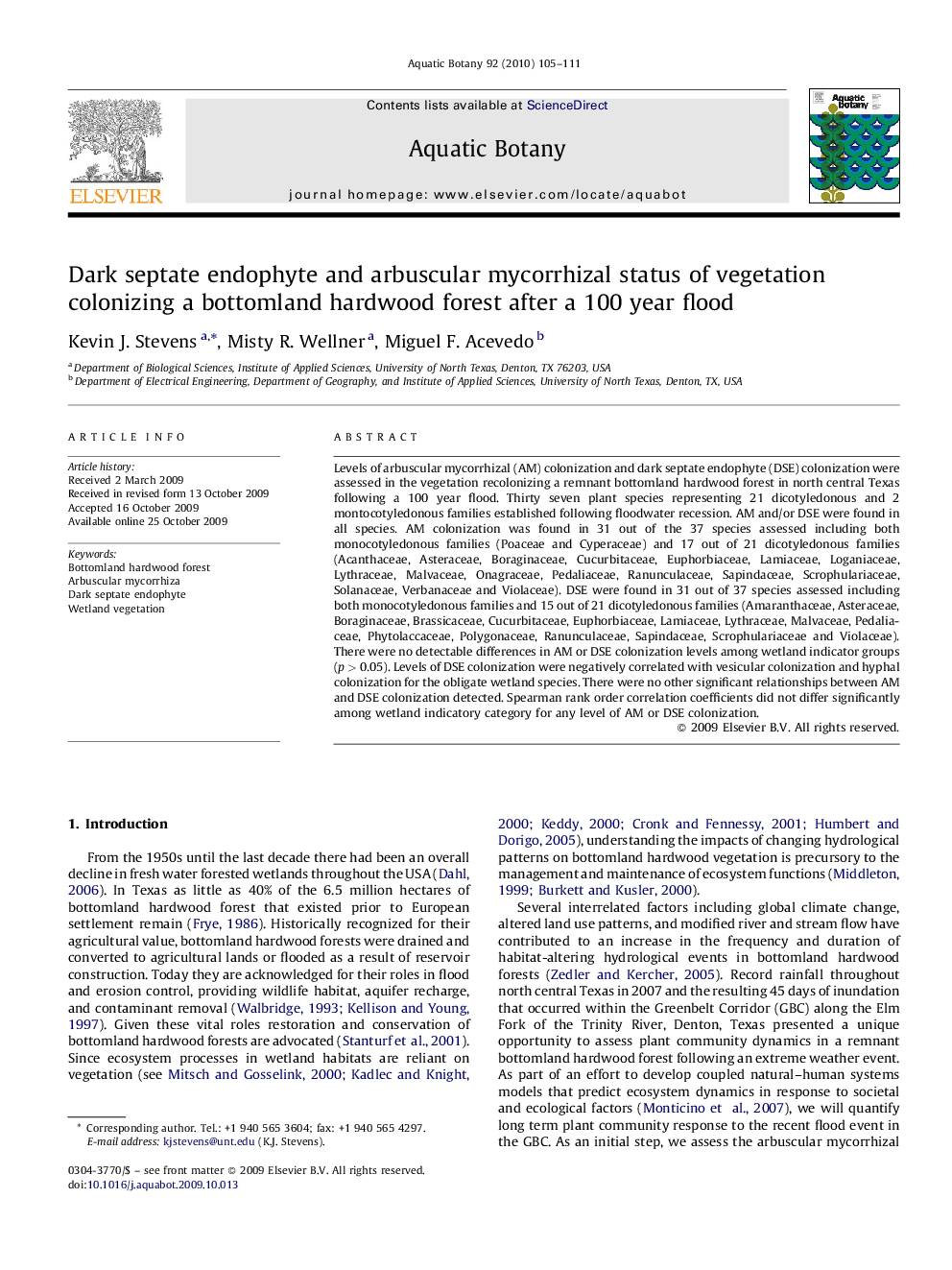| Article ID | Journal | Published Year | Pages | File Type |
|---|---|---|---|---|
| 4528341 | Aquatic Botany | 2010 | 7 Pages |
Levels of arbuscular mycorrhizal (AM) colonization and dark septate endophyte (DSE) colonization were assessed in the vegetation recolonizing a remnant bottomland hardwood forest in north central Texas following a 100 year flood. Thirty seven plant species representing 21 dicotyledonous and 2 montocotyledonous families established following floodwater recession. AM and/or DSE were found in all species. AM colonization was found in 31 out of the 37 species assessed including both monocotyledonous families (Poaceae and Cyperaceae) and 17 out of 21 dicotyledonous families (Acanthaceae, Asteraceae, Boraginaceae, Cucurbitaceae, Euphorbiaceae, Lamiaceae, Loganiaceae, Lythraceae, Malvaceae, Onagraceae, Pedaliaceae, Ranunculaceae, Sapindaceae, Scrophulariaceae, Solanaceae, Verbanaceae and Violaceae). DSE were found in 31 out of 37 species assessed including both monocotyledonous families and 15 out of 21 dicotyledonous families (Amaranthaceae, Asteraceae, Boraginaceae, Brassicaceae, Cucurbitaceae, Euphorbiaceae, Lamiaceae, Lythraceae, Malvaceae, Pedaliaceae, Phytolaccaceae, Polygonaceae, Ranunculaceae, Sapindaceae, Scrophulariaceae and Violaceae). There were no detectable differences in AM or DSE colonization levels among wetland indicator groups (p > 0.05). Levels of DSE colonization were negatively correlated with vesicular colonization and hyphal colonization for the obligate wetland species. There were no other significant relationships between AM and DSE colonization detected. Spearman rank order correlation coefficients did not differ significantly among wetland indicatory category for any level of AM or DSE colonization.
